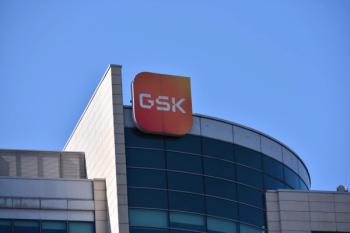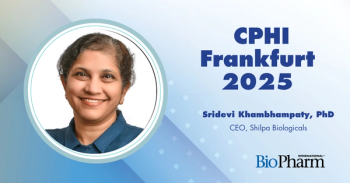
- BioPharm International-11-01-2014
- Volume 27
- Issue 11
Outside Looking In
European CDMOs want into the US market, but entry options are limited.
At the 2014 CPhI trade show, held Oct. 7–9 in Paris, executives from CDMOs and contract labs whose operations are solely in Europe expressed their desire to expand their operations into North America. These executives, however, were stymied about how to do it.
Their interest in North America is not surprising: opportunities there are much greater than in Europe. There is far more venture capital financing in North America than in Europe and the level of drug development activity is significantly greater. Many European economies are contracting, and government budgets to pay for drugs are under stress. Further, with its large number of former bio/pharma facilities converted to contract services businesses, Europe experiences price competition in the drug-development market that seems more aggressive than in North America.
Challenges in entering US market
European companies are challenged on several levels to enter North America. For one thing, European contractors don’t have a good understanding of the North American market. While some may have had an FDA inspection, many haven’t and don’t understand FDA requirements and how they differ from European requirements.
Further, they have minimal experience in trying to sell their services in North America; some may have one sales representative based in the US, but many have none. Sales and marketing in particular can be different in North America versus Europe. For instance, tradeshow marketing is important in Europe and cold calling is uncommon, but in North America it is the other way around. Even if they have sales representation in North America, European CDMOs suffer from low brand recognition and can have a hard time getting clients to travel overseas for services that are readily available domestically.
Another challenge for European contractors is that there is a higher barrier to market entry in North America than they are used to. Most European CDMOs were founded as buyouts of facilities that global bio/pharmaceutical companies wanted to get rid of. Facility closures are difficult in Europe because of labor laws and because of fears that mass layoffs could hurt companies tendering for government drug supply contracts. As a result, pharma companies have been willing to offload unneeded facilities to management teams or private equity investors at a fraction of their replacement value and with contracts to continue to manufacture legacy products for some period. This has made it relatively easy to enter the contract services business in Europe, although the resulting overcapacity has hurt pricing for contract manufacturing and development.
Opportunities to acquire facilities on such favorable terms are fewer and farther between in North America. Because North America consists of just two large markets, versus the 20-plus small to mid-size markets in Europe, there weren’t so many facilities built in the first place, so there have been fewer facilities to divest. As result, European companies looking to enter North America may have to “pay retail” to acquire a facility or services business. Acquisition valuations of CDMOs in recent years have been especially high.
European CDMOs are also hindered by a lack of capital necessary to acquire their way into North America. They are often poorly capitalized, given that their initial buy-in to the industry didn’t require a lot of investment. Further, their low profit margins mean they haven’t been able to accumulate a significant amount of equity through retained earnings. Also, some European CDMOs are employee-owned and may have particular challenges raising additional capital without threatening their ownership structure.
Opportunities exist
The barriers to European entry into the US CDMO market are high but not insurmountable. Examples of European contractors that have successfully established themselves in North America in the past 10 years include CDMOs Vetter and Almac as well as contract labs like SGS and Eurofins. Those companies, however, had favorable ownership structures (family trusts or publicly-traded) that gave them access to adequate capital.
Further, it is occasionally possible to acquire facilities in North America under favorable terms. In 2013, European CMO Unither acquired a dose manufacturing facility with contracts in Rochester, New York, from UCB Pharma; and Fareva was able to acquire a manufacturing and packaging facility with contracts in Richmond, Virginia, from Pfizer in 2011.
It’s also worth noting that North American companies have challenges similar to the Europeans’ when considering entry into Europe. A common problem has been the failure to realize that Europe is not a single market--not even the European Union--but rather a collection of more than 20 countries with different languages and cultures, and a wholly different concept of distance. So, for instance, North American companies have established facilities in Ireland intended to serve all of Europe, only to learn that continental companies view the Irish facilities as far away and foreign.
As the bio/pharmaceutical and contract services industries consolidate, having a global network of facilities, at least in North America and Europe, has become increasingly important for competitive success. Mid-size European CDMOs and contract labs must figure out how to overcome the barriers to their entry into North America if they intend to succeed over the long term.
About the Author
Jim Miller is president of PharmSource Information Services, Inc., and publisher of Bio/Pharmaceutical Outsourcing Report, tel. 703.383.4903, Twitter@JimPharmSource,
Articles in this issue
about 11 years ago
Germany Post AMNOG: Insights for BioPharmaabout 11 years ago
Standardizing Practices for Cellular Therapy Manufacturingabout 11 years ago
Setting Standards for Biotech Therapeutics in Indiaabout 11 years ago
Viral Clearance Challenges in Bioprocessingabout 11 years ago
Cell Culture Consumables Prevent Contaminationabout 11 years ago
Hype vs. Healthabout 11 years ago
New Era for Generic Drugsabout 11 years ago
DoE Provides Benefits, but Preparation Is Necessaryabout 11 years ago
Vector Manufacturing and Testing for Gene and Cell Therapy ApplicationsNewsletter
Stay at the forefront of biopharmaceutical innovation—subscribe to BioPharm International for expert insights on drug development, manufacturing, compliance, and more.




